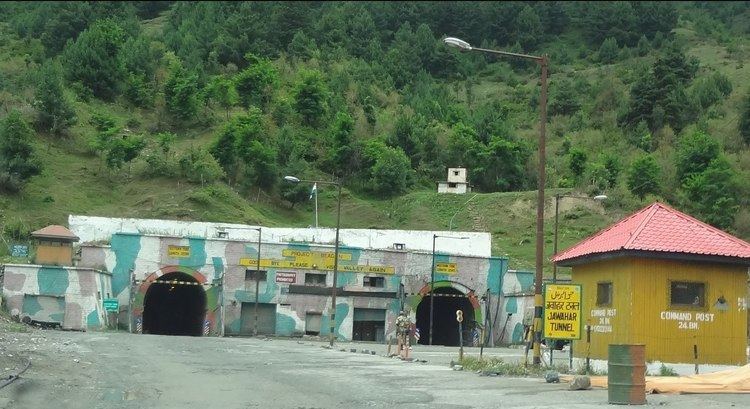Traffic Automotive Length 2,850 m Number of lanes 2 | Work begun 1954 Vehicles per day 7000 Lowest elevation 2,194 m | |
 | ||
Opened December 22, 1956 (1956-12-22) Design engineer Alfred Kunz and C. Barsel | ||
Driving from jawahar tunnel to banihal in jammu and kashmir part 5
Jawahar Tunnel or Banihal Tunnel is a road tunnel in the Indian state of Jammu and Kashmir. Named after the first Prime Minister of India Jawaharlal Nehru, it was constructed for round-the-year surface transport by Alfred Kunz and C. Barsel (both were German) between 1954 and 1960. The Jawahar tunnel has been operational since 22 December 1956. The length of tunnel is 2.85 km (1.77 mi), its elevation is 2,194 m (7,198 ft) and it has one lane road in either direction. It is situated between Banihāl and Qazigund on NH 1A that has been renumbered NH 44. The tunnel facilitates round-the-year road connectivity from Srinagar to Jammu.
Contents
- Driving from jawahar tunnel to banihal in jammu and kashmir part 5
- Map of Jawahar Tunnel 192212
- Jawahar tunnel or banihal tunnel kashmir india hd video
- References
Map of Jawahar Tunnel, 192212
Later the tunnel was renovated by the Border Roads Organization under the project BEACON in 1960. It was designed for 150 vehicles per day in each direction but the number of vehicles is now 7,000 in both directions. After renovations, the tunnel now has a two-way ventilation system, pollution & temperature sensors, lighting system and with emergency phones for any assistance from Border Roads Organization.
It is guarded by military round the clock, photography or videography inside or nearby the tunnel is strictly prohibited. Once the vehicle enters the tunnel, it has to maintain the same speed throughout the tunnel. CCTVs are installed in the tunnel for continuous monitoring.
The tunnel used to be closed for civilian traffic between midnight and 8 a.m. until 2009. Now it is open all 24 hours of the day.
A new higher capacity, all-weather tunnel (Banihal Qazigund Road Tunnel) under construction (as of Jan 2017) is expected to reduce the traffic through the Jawahar tunnel when completed.
